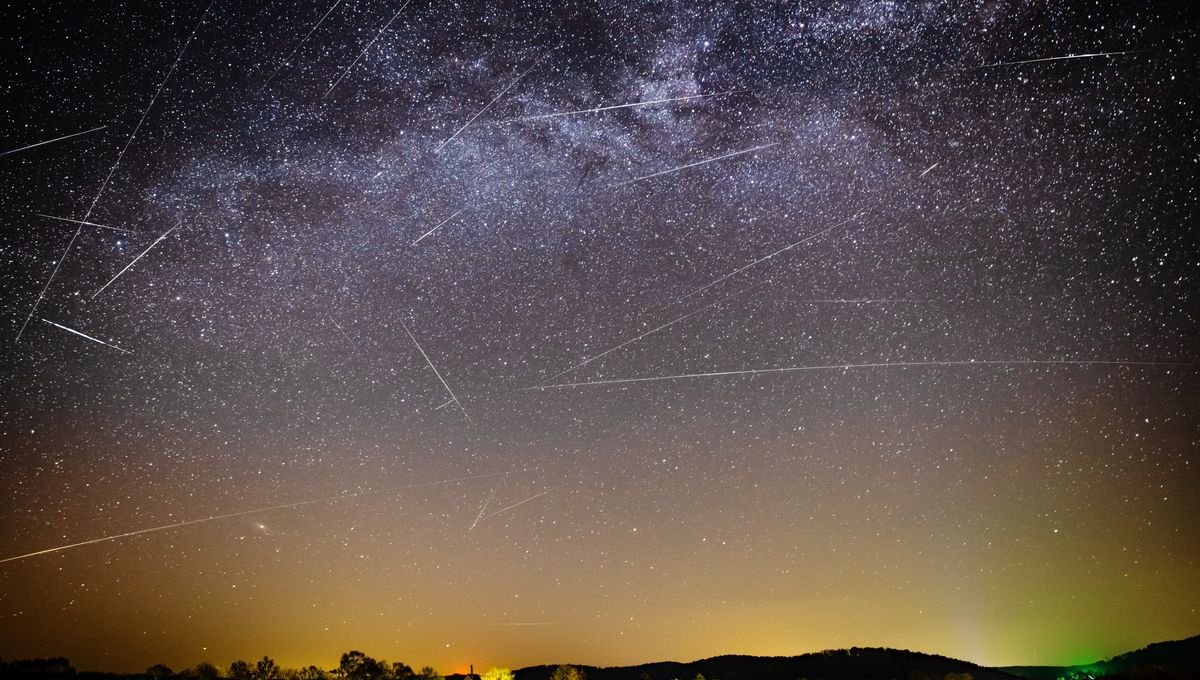
Regarding incredible meteor showers, none can compete with the Lyrids! In 1803, a journalist in Richmond, Virginia, reported them coming down at a whopping 700 an hour. Two thousand years prior, the Zuo Zhuan, an ancient Chinese narrative history, described a Lyrids meteor shower where the “stars fell like rain” in 687 BCE. This meteor shower is even mentioned in Australian Indigenous Astronomy, which extends even more millennia into the past.
The Lyrids peak this weekend but, unfortunately, scientists do not expect that it will be as spectacular as those historical events. Peaking in the night between April 22 and 23, the International Meteor Organization predicts about 18 meteors an hour. However, the Moon is waxing with a slim little crescent, making it an ideal night to see these meteors.
To watch, simply look up at the dark sky – you don’t need any specialist equipment, just allow your eyes about 30 minutes to adjust to the dark and enjoy the show.
They are called Lyrids as they appear to come from the direction of the Lyra constellation. Lyra is easy to spot thanks to its brightest star, Vega. The actual origin of the meteors is the trail of debris left in the inner Solar System by Comet C/1861 G1 Thatcher as it orbits the Sun.
This is a long-period comet: it goes around the Sun every 415 years or so. The first time it was observed was back in 1861 so the next time will be from 2276 onwards, meaning it’s unlikely that any of us will be around to see it.
The increase in activity, as seen in the past, doesn’t just depend on the comet coming closer to the Sun. The influence of the planet shifts the trail of debris into Earth’s orbit, boosting the flux for one season. The last time it happened was in 1982, observers counted around 90 shooting stars per hour at its peak. This means we have to wait for another 19 years for the next big Lyrids event.
Source Link: Lyrids Meteor Shower Is Peaking This Weekend – How To Watch The Spectacle